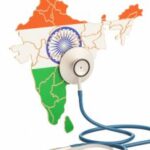India, with its vast and diverse population, faces significant challenges in providing accessible and quality healthcare to all its citizens. The healthcare system in India is a complex mix of public and private sectors, traditional and modern practices, and varying levels of accessibility and quality. This article explores the structure, challenges, and recent developments in India’s healthcare facilities.
The Structure of Healthcare in India
Public Healthcare System
The public healthcare system in India is managed by the government and provides free or subsidized healthcare services to the population. It operates at multiple levels:
- Primary Healthcare: The foundation of the public health system, providing basic healthcare services through Primary Health Centers (PHCs) and Sub-Centers. These centers cater to rural and remote areas, offering services like maternal and child healthcare, immunization, and treatment of common ailments.
- Secondary Healthcare: Includes Community Health Centers (CHCs) and district hospitals, providing more specialized services and acting as a referral point for PHCs.
- Tertiary Healthcare: Comprises specialized hospitals and medical institutions offering advanced medical care and treatment. These include large government hospitals and institutes like the All India Institutes of Medical Sciences (AIIMS).
Private Healthcare System
The private sector plays a significant role in healthcare delivery in India, especially in urban areas. It includes:
- Hospitals and Clinics: A wide range of private hospitals and clinics provide varying levels of care, from basic to highly specialized services.
- Diagnostic Centers: Offering advanced diagnostic services, often equipped with the latest technology.
- Pharmacies: Widely available, providing medications and health-related products.
Traditional and Alternative Medicine
India has a rich heritage of traditional medicine systems, including Ayurveda, Yoga, Unani, Siddha, and Homeopathy (AYUSH). These systems are integrated into the healthcare system and regulated by the Ministry of AYUSH.
Challenges Facing Healthcare in India
Accessibility and Affordability
A significant portion of India’s population, especially in rural areas, lacks access to adequate healthcare facilities. The disparity between urban and rural healthcare infrastructure leads to challenges in accessibility. Additionally, while public healthcare is affordable, it often suffers from issues like overcrowding and limited resources, pushing people towards the more expensive private sector.
Quality of Care
The quality of healthcare services can vary widely. Public hospitals often face issues like insufficient staff, outdated equipment, and lack of infrastructure. In contrast, private hospitals, though better equipped, may not always be affordable for the average citizen.
Workforce Shortages
India faces a shortage of healthcare professionals, including doctors, nurses, and allied health workers. This gap is more pronounced in rural areas, where attracting and retaining healthcare professionals is particularly challenging.
Health Insurance
While the government has launched schemes like Ayushman Bharat to provide health insurance coverage to the economically weaker sections, the penetration of health insurance remains low. Many people still incur high out-of-pocket expenses for medical treatments.
Recent Developments and Initiatives
Ayushman Bharat
Launched in 2018, Ayushman Bharat is one of the world’s largest government-funded healthcare schemes. It aims to provide health coverage to over 500 million people, offering financial protection for secondary and tertiary care.
Digital Health Initiatives
The National Digital Health Mission (NDHM) aims to create a digital health ecosystem by integrating healthcare services with technology. This includes initiatives like electronic health records (EHR), telemedicine services, and health information exchanges.
Infrastructure Development
The government has been investing in upgrading healthcare infrastructure, particularly in rural areas. This includes building new hospitals, upgrading existing facilities, and improving medical education and training.
Public-Private Partnerships
To bridge the gap in healthcare delivery, the government is encouraging public-private partnerships (PPPs). These collaborations aim to leverage the strengths of both sectors to enhance healthcare accessibility and quality.
Conclusion
India’s healthcare system is a dynamic and evolving entity, striving to meet the needs of its diverse population. While significant progress has been made in recent years, considerable challenges remain in ensuring equitable access to quality healthcare. Continued investment in infrastructure, workforce development, and innovative health initiatives will be crucial in addressing these challenges and achieving better health outcomes for all Indians.
Leave a Reply